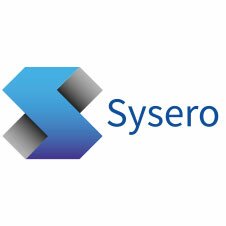Sysero: Addressing legal operations challenges with automation
While priorities for legal operations have shifted over the past year, pre-pandemic challenges still remain. Today’s law firms and legal departments are still under immense pressure to operate more efficiently, contain costs and collaborate more effectively with clients.
As legal providers address the impact of the pandemic, they’re having to navigate a great deal of uncertainty whilst also managing a surge in workload. According to the 2020 Deloitte Legal Department Strategy Survey, almost 80% of legal professionals say their workload has increased as a result of the arrival of COVID-19.
To strike a balance between meeting rising demand and maintaining quality, law firms and legal departments are investing in automation technologies and transforming their approach to transactional business. It’s no secret that automation affords greater efficiency, adaptability and productivity. Still, as much as legal providers are eager to adopt automation, there are still a variety of decisions that need to be made about how best to put automation to work for each individual organization.
Selecting the right automation project for your organization comes down to understanding what challenges you want to address. At Sysero, we’ve worked with leading firms around the world to design and implement automation solutions to solve a range of legal operational challenges. Here, we look at some of the most common use cases of automation and how you can use them to overcome your biggest operational challenges.
Improve Internal Knowledge Management
Law firms hold an immense amount of internal knowledge and know-know, including precedents, opinions, documents and expertise. So, it’s not surprising that many firms struggle with how to effectively capture, organize and share explicit and tacit knowledge from across the firm.
Fortunately, advances in automation technology have made it easier than ever to optimize know-how across the firm. More firms are combining web-based knowledge libraries and process management to simplify categorization and offer eCommerce-like search capabilities. For example, using workflow automation tools like Sysero, you easily index and categories know-how by practice area, type of work, type of client, matter and other aspects of the firm and make it easily accessible through fast, flexible search capabilities.
Workflow automation can also be used to overcome another major challenge in managing internal knowledge – keeping it relevant and high-quality. Knowledge is constantly evolving, and putting workflow automation in place can help you monitor new and changing know-how through quality notifications and review workflows.
Improve Efficiency and Quality in Document Generation
According to a recent Legal Trends Report, lawyers can spend up to 50% of their time on administrative tasks, such as reviewing and drafting documents. Manually drafting new documents and contracts requires a significant amount of time, which could be better spent advising clients. Not to mention, it also increases the risk of human error. However, automation can simplify the drafting of legal documents, whilst improving quality.
Document automation solutions, like Sysero, use intuitive online questionnaires to help lawyers quickly and accurately complete contracts, documents and compile document packs. By automating frequently used contracts and documents, firms can shift lawyers time from drafting documents to focusing on client needs, while also mitigating the risk associated with manual production.
Take for example, how Finnish law firm Castrén & Snellman has streamlined its approach to document creation with its Signe tool. Based on the white labeling facilities of Sysero and designed from the ground up to meet the needs of C&S, the Signe tool combines knowledge management and document automation to ease the workload of the firm’s lawyers, speed up the document drafting process and improve the quality of drafts.
Digitize Client Onboarding and Acceptance
Given the new work-from-anywhere world, the ability to quickly accept new clients and matters online, whilst ensuring regulatory compliance is a major hurdle for many firms. Traditionally, the client intake process has relied on manual and time-consuming processes, such as comparing and entering information across multiple systems. This approach not only creates a lack of visibility, but also is difficult to achieve across distributed workforces and presents a greater opportunity for key considerations to fall through the cracks.
With workflow automation, firms can accelerate the acceptance of new clients, while simultaneously identifying potential risks. For example, Arntzen de Besche implemented a digital onboarding solution that uses a built-in risk matrix to automatically assess a new client against Money Laundering Act requirements. The automated risk-based acceptance process allows the firm to speed up client acceptance, ensure compliance and document each step of the process for internal quality control and compliance protection.
Innovate Service Delivery
Today’s legal clients want greater transparency, immediacy and value from their legal providers. One way that forward-thinking law firms are meeting these demands is through self-service client portals.
Client self-service portals leverage document workflow automation to enable clients to quickly generate firm-approved documents on a self-service basis. To generate a new document, clients simply access the portal, find the relevant template (such as an NDA), complete a guided online form, and finalize the firm-approved document.
By giving clients the opportunity to generate legal documents online – when and as needed – law firms are able to deliver differentiated value and more flexibly work with clients working remotely.
Ready to take advantage of automation?
Whether you’re looking to improve knowledge-sharing across your firm, streamline document generation, digitize client acceptance or bring the benefits of automation closer to your clients, Sysero can help. Automation can be employed in numerous ways to help your firm drive efficiency, productivity and profitability. To learn more about how your firm can take advantage of automation, get in touch with our team.



